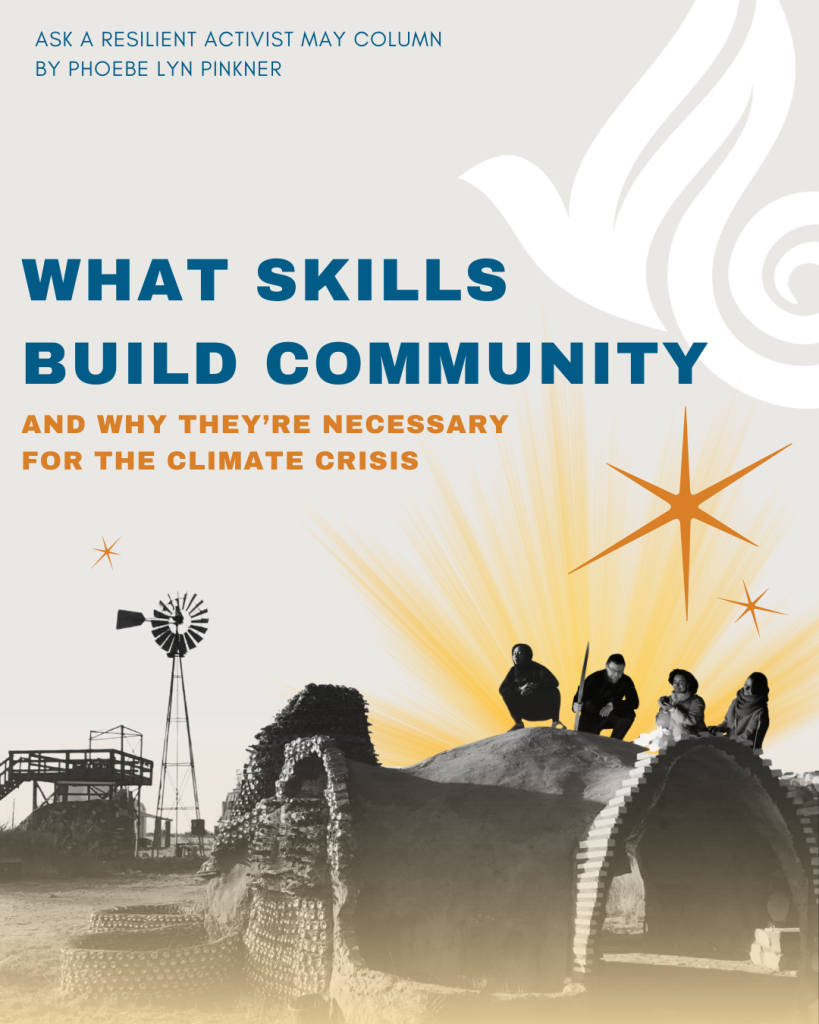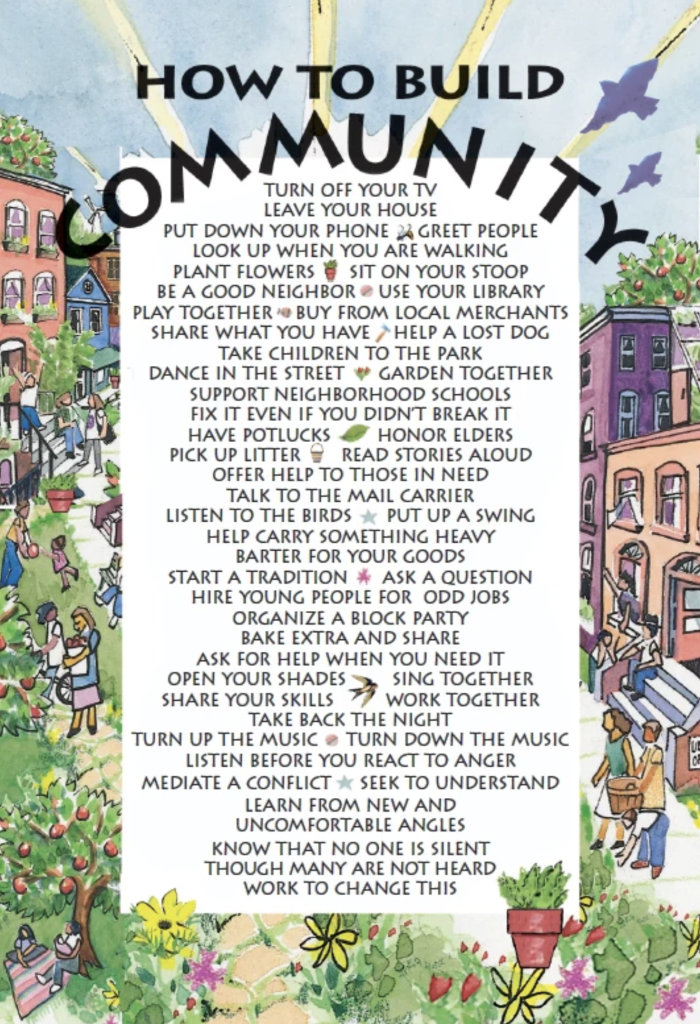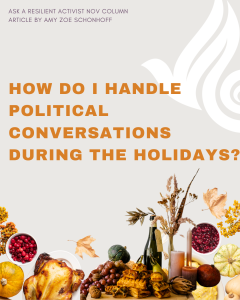Ask a Resilient Activist Blog by Phoebe Lyn Pinkner | May 2025
Community: Our Lifeline, Our Birthright
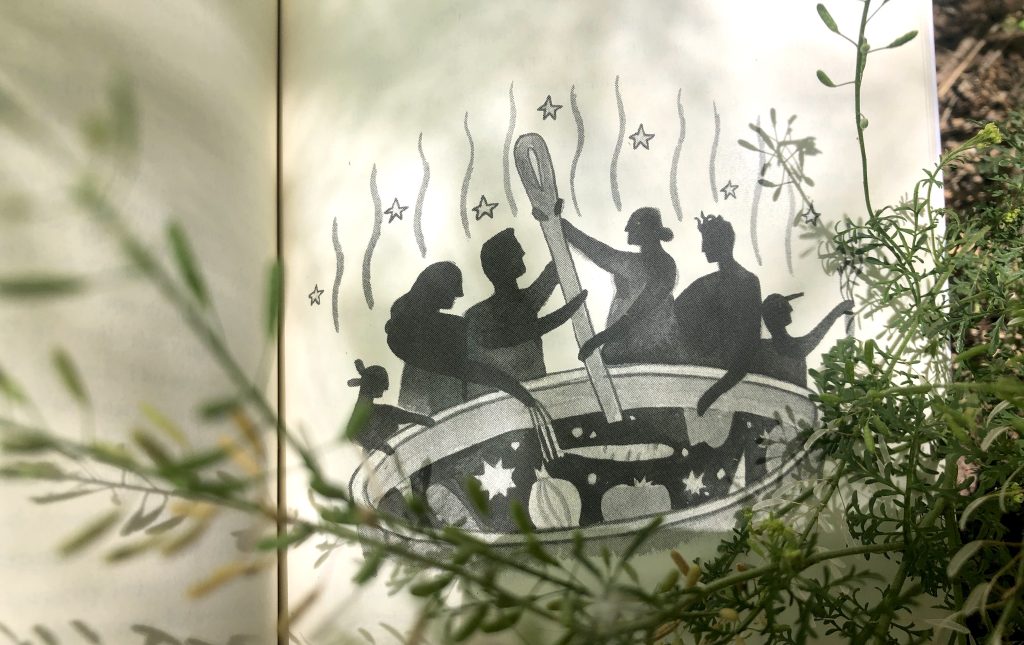
Do you remember being young, comfortably tucked into bed, as the distant hum of adult voices and laughter drifted through the floorboards?
Do you remember the sensation of walking into a classroom, where you caught the bright eye of a friend who saved you a seat? Do you remember the first time you spilled the ugly and beautiful truths of your heart out to a friend, who did not gape or laugh or dismiss, but paid witness to the fullness of you?
This is belonging.
As humans, our capacity to sustain belonging and community is essential to our well-being. And in the face of the climate crisis, it’s a skill we must intentionally cultivate. The future is already arriving, and it asks of us:
Are we willing to value community? Are we willing to recognize a world larger than ourselves, and a life longer than the ones we will live?
Nuclear Families and Altruistic Lemurs
First, we must recognize the ocean we’re swimming in here in the U.S. – late capitalism. By this, I mean the modern, late-stage phase of capitalism we now experience, marked by the proliferation of multinational corporations, environmental extraction, mass consumerism, commodification, globalization, and extreme income inequality.
Modern Americans are living their lives in this context, in addition to the unique American flavor of individualism that narrows our idea of community to the nuclear family. Paired with the entrenched values of late capitalism, this individualistic lens can breed a mindset of isolation, scarcity, disconnection, and fear of the “other.” While it offers the illusion of freedom, it ultimately severs us from the rich, intergenerational web of knowledge, support, and belonging that is our birthright.
Nature shows us remarkable examples of the resilience that comes from community – from chimpanzees helping humans without reward in return², to lemurs caretaking the infants of strangers³, to humpback whales protecting other species from killer whales⁴.
When I speak of community, I’m referring to it as a diverse web of relationships where shared values including reciprocity, communication, and belonging reign. Community is not a static achievement we arrive at. Community is something we must practice – especially as the road gets rough.
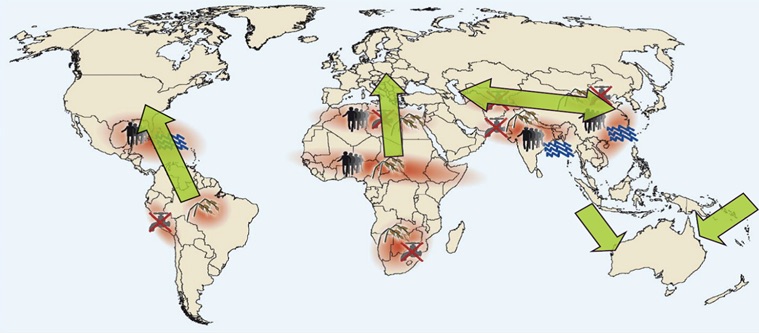
The Role of Community in Climate Migration and Displacement
With the climate crisis underway, millions of people – but especially historically oppressed communities – are already experiencing the brunt of extreme weather events, environmental stress, relocation, and more. As explored in Gaia Vince’s book Nomad Century: How Climate Migration Will Reshape Our World, climate change has already uprooted millions in the U.S. and more migration is to come. In 2018, 1.2 million Americans were displaced by extreme weather events and by 2020, the annual toll was up to 1.7 million people.¹

If you wish to better understand the human story within these numbers, I recommend 2022’s On Being podcast “On Knowing What We’re Called To” with disaster recovery lawyer and Louisiana native Colette Pichon Battle, who conveys with eloquent honesty the reality poor New Orleans locals are facing with rising sea levels. When confronting increasing climate migration, Battle states, “We must establish a new social attitude to see migration as a benefit, a necessity, for our global survival–not as a threat to our individual privilege.”
As a young person, I can’t ignore the climate crisis when thinking about my future. For me, that meant making the difficult choice of leaving my hometown St. Louis and starting the search for a more climate-resilient home up north.
Amidst the tumult of the coming century, it is my belief that we will be able to live more secure, rooted, and fulfilling lives if we intentionally practice community.
Community can offer us resource sharing, mutual support, collective problem-solving, bolstered food sovereignty, intergenerational knowledge, cultural continuity, and emotional support – all of which we will rely upon in the climate crisis. Intentional community operates through an economic model no longer built upon scarcity and competition. As Robin Wall Kimmerer articulates in The Serviceberry: Abundance and Reciprocity in the Natural World, “The prosperity of community grows from the flow of relationships, not the accumulation of goods.”
Now that we know that community-building will be necessary to survive and thrive into the climate crisis, what skills can we use to actually practice it?
Skills For Tending A Village
In exploring the skills necessary to build resilient community, I bow to the work of author and Jungian analyst Toko-pa Turner. In Belonging: Remembering Ourselves Home, Turner dives into “the competencies of belonging” – skills necessary to build lasting relationships with others, the planet, and our innermost selves, which we will explore below.
While these skills may seem new to an individualistic society, they are fundamental skill sets to ancient cultures across the globe who have always understood intergenerational community as vital to resilience.⁵
? Reciprocity
In my early 20s, I felt a strong need to be fully “self-sufficient” – I derived fulfillment from my independence and (perceived) lack of need from others. When others would offer help, I’d refuse it, no matter how badly it was needed. What I didn’t realize was that by rejecting the gift of others’ help, I was cutting myself off from the deepening of relationship and reciprocity.
To create community, we need someone willing to take the lead and brave the risk of rejection. But we also need someone willing to listen and accept the gift. As Turner explains, “…Answering the call is also a form of generosity. Beyond receiving what the other is offering, it is also a way of giving relevance to their efforts.”
Reciprocity calls us into this interdependent relationship where we give and receive freely from one another, knowing this is what creates a deeply connected community.
? Shared Values
It may seem obvious, but before we can build the village we long for, we must first name what we value most. These values act as lighthouses to attract others who feel the same.
Personal introspection is vital to this process.
If you struggle to pinpoint the core values that ground your life and ideal community, intentional conversation, guided journaling, nature-based sensory exploration, and meditation are good places to start (if you’re interested in being led through practices like these in a supportive environment, check out The Resilient Activist’s Longest Light Retreat, Labyrinth Walk, or other upcoming mindfulness events).
Once you’ve identified your core values and connected with others who share them, the first step in building community is engaging in activities that reflect those values. With these in mind, what community groups could you participate in?
Are there neighborhood gardens, libraries, meditation groups, red tent gatherings, dance circles, sport teams, farmer’s markets, virtual book clubs, or other events you could engage with that reflect your values?
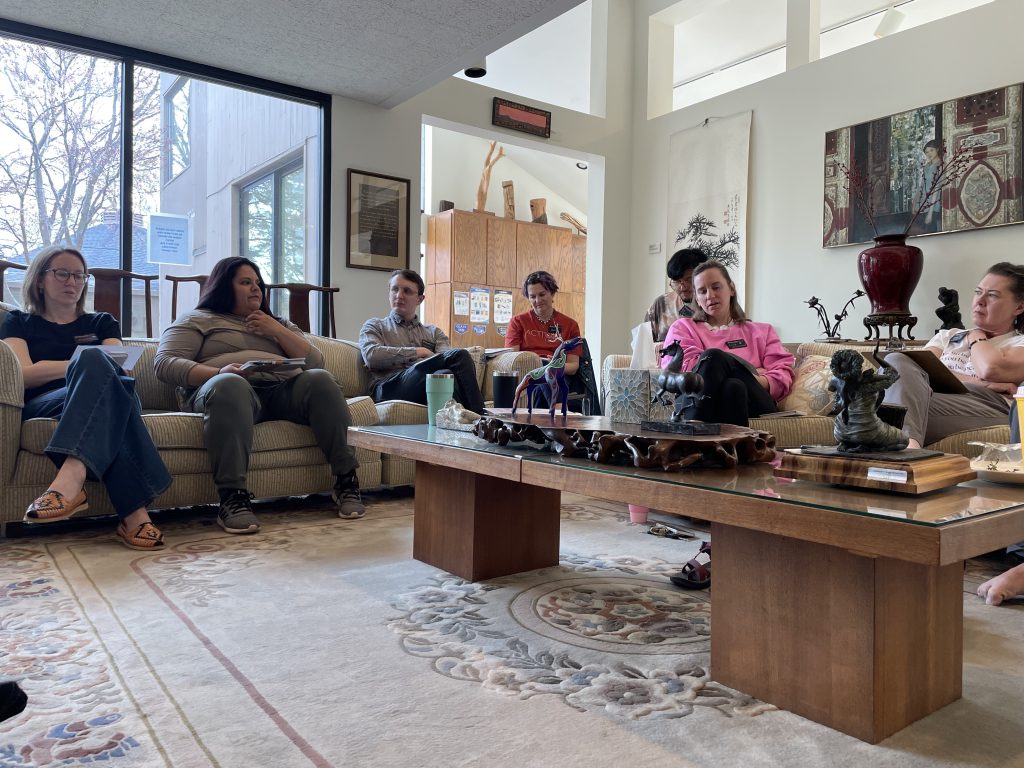
At The Resilient Activist, one of the primary ways we build community is through our monthly Resilient Activist Conversations (formerly Climate Cafés). These recurring events create a space where people concerned about the current polycrisis can share their emotions, listen deeply to others, learn resilience skills, and cultivate a sense of shared belonging through honest, mutual exchange.
Another powerful example of this is the global community sparked from ecophilosopher Joanna Macy’s framework The Work That Reconnects. Through shared rituals, learning, and deep inquiry, this community regularly gathers to build the emotional and spiritual resilience needed to stay connected—and committed—as they work toward a better world.
Whether you care about building local food sovereignty, protecting wild water, engaging in artistic growth, or something else entirely, working as a group to achieve these larger visions solidifies shared values and deepens community bonds.
“As soon as you begin to move in the direction of what you value, participating in shared activities around those values, you begin to see that you aren’t alone. When you’re standing up with others, you can look around and see who you are belonging with and, by standing together, you fortify those values in the world.” – Toko-pa Turner
As you begin cultivating community with others, you’ll learn to stop knocking on doors that remain closed. If someone repeatedly withholds reciprocity and vulnerability, redirect your energy toward those who are ready to meet you in the work today. Trust that if and when others are ready, they will come.
? Milestones and Ritual
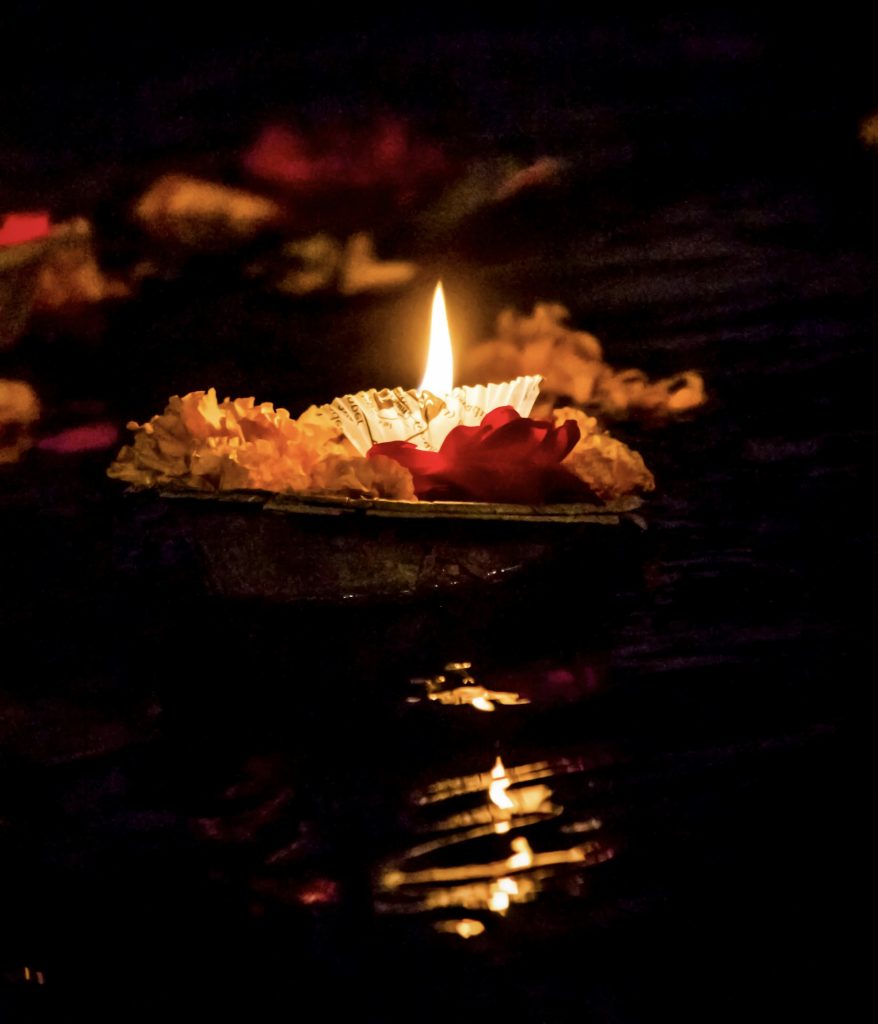
To solidify our sense of community, people need regular reasons to gather—to celebrate, collaborate, and honor the milestones that shape our lives.
Some communities congregate at the height and transition of the seasons, holy days, graduations, or personal holidays (for some of my family members, Hunter S. Thompson’s July 18 birthday is as sacred as Christmas!).
Get creative and find what rituals hold the most resonance for your community.
More than an act reserved for the religious, ritual is a cultural technology accessible to everyone. It is a tool that puts us into conversation with ourselves, each other, and the wider story our lives are a part of.
Witnessing is at the core of community milestones and rituals, as Turner explains:
“There are certain passages and initiations that require the presence of others to help hold the bigness of the new narrative while it stabilizes in our bodies, minds, and hearts. When we leave behind an old identity for a new form of belonging, there are always moments when we feel tempted to slip back into our old skin. Whether it is a grief that is too big to grieve alone, recovery from an illness that threatens to return, or stepping up to a new altitude of Self that’s tough to acclimate to, community behaves like a broader leverage to bear the weight of transition. Friends remind us, simply by paying witness, that we have become something new and, with the corroborate power of gathering in ceremony, we can never wholly unbecome it.” – Toko-pa Turner
To ensure our community endures, we must regularly gather and practice togetherness – creatively finding ways for our actions to include others. Especially those who have been sidelined by American society – those who are disabled, queer, elderly, etc. – all of them belong in our circle!
As nature so beautifully illustrates, diversity makes us stronger.
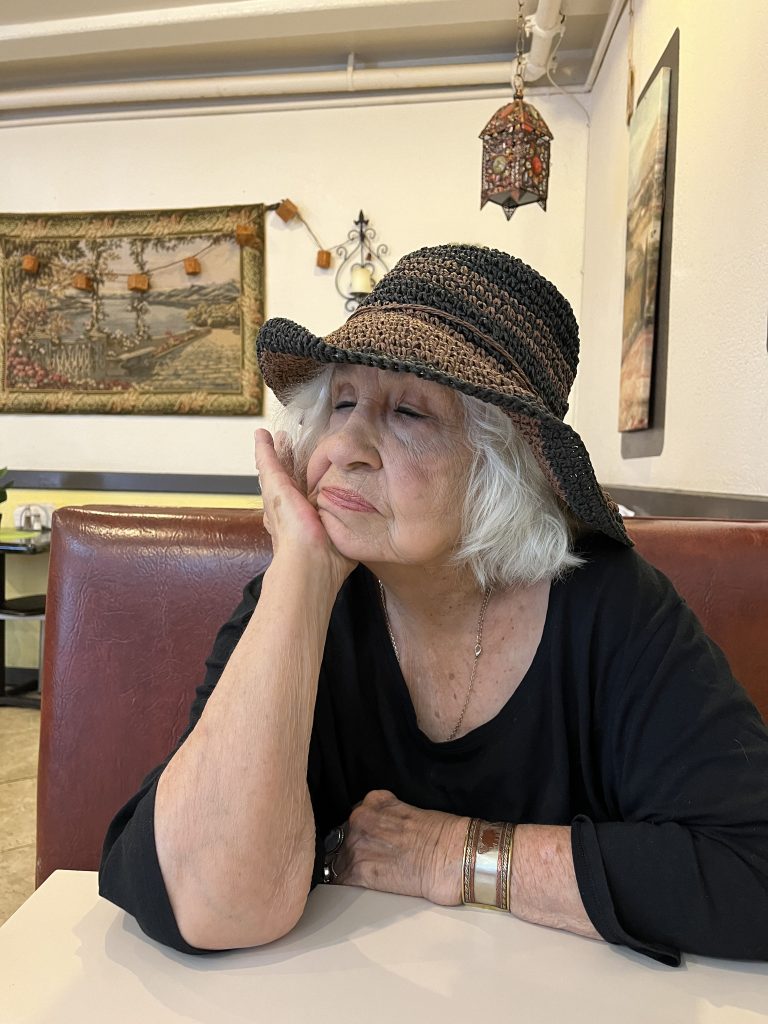
? Eldership
How many times have you stood in the shadow of fear, loss, or despair and longed for the wisdom of someone who’s been there before?
In a society that fears and denies death, it’s no mistake we push our elderly to the sidelines. Yet our communities are more vibrant and resilient when we make space for our elders, whose wisdom can guide us out of our narrow live experiences.
More than just an older person, an elder is someone who has chosen to stay rooted, who has matured into the competencies of belonging, has chosen inner development over external ambition, and whose life naturally extends an invitation to the young.
Here I’m reminded of my tenacious grandmother Wanda. Even when she doesn’t have clear solutions to my problems, I always leave our talks feeling lighter—buoyed by her wide-angle perspective and ruthless humor. To give you just a taste, here is Wanda’s philosophical take on Goodwill:
“You know what? I think people thrive most when they’re responding to the unexpected. That’s why I love Goodwill so much. It’s like meditation, but it’s physical. Half of the fun of life is the spontaneity. You have to come up with new solutions, new ideas, and suddenly, your brain is kicked out of its rut.” – Grandmother Wanda
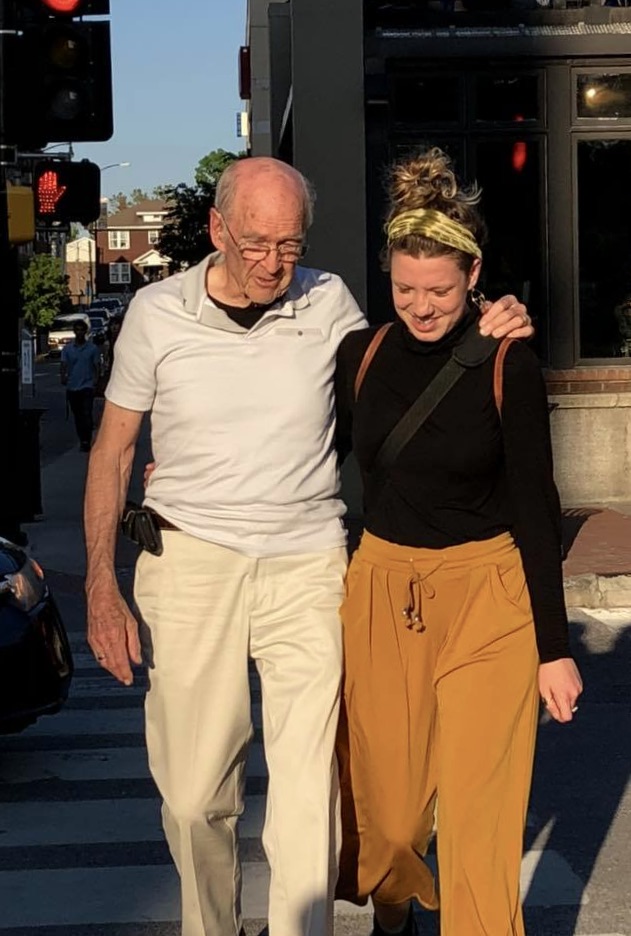
With open curiosity and attentive listening, elders help younger generations find their way. But elders only thrive where communities recognize and honor their role.
If the older people in your circle aren’t the wise ones you’re looking for, look around your wider community.
Find those wrinkled ones whose eyes still sparkle, who laugh deeply and without restraint, who listen intently, and who live with purpose beyond themselves. If you look, you will find them. As we walk into the climate crisis, the grounded wisdom of elders will be life-giving.
? Seeing and Being Seen
“The simple experience of being valuable and important to someone else has a tremendous recreative power.” – Henri Nouwen
In my experience, a sense of community only solidifies when we feel ourselves being seen.
Belonging is woven when we name our values, offer our presence, give our gifts, and receive from others. This requires voluntary trust, an acceptance of risk in return for something potentially far greater.
Can you allow yourself to be seen and loved as you are, without the safety of distance? Can you release control and open yourself to the influence of others? Can you place trust outside of your own walls?
Not everyone is at a stage of internal security or development to reach this stage, and that is okay. But if you are looking to build a resilient, long-term community, now might be the time to look for those who are ready.
Alone we are fragile fibers, stories with no listeners, but together we are a tireless network. For you to survive, we must survive.
“Instead of always asking, “where do I belong?” – a question that is based in shortage – consider reversing your definition of the word from a noun to a verb, in which belonging becomes a practice of generosity as in, “I belong myself to that which I love.” – Toko-pa Turner
So my friend, what will you belong yourself to?
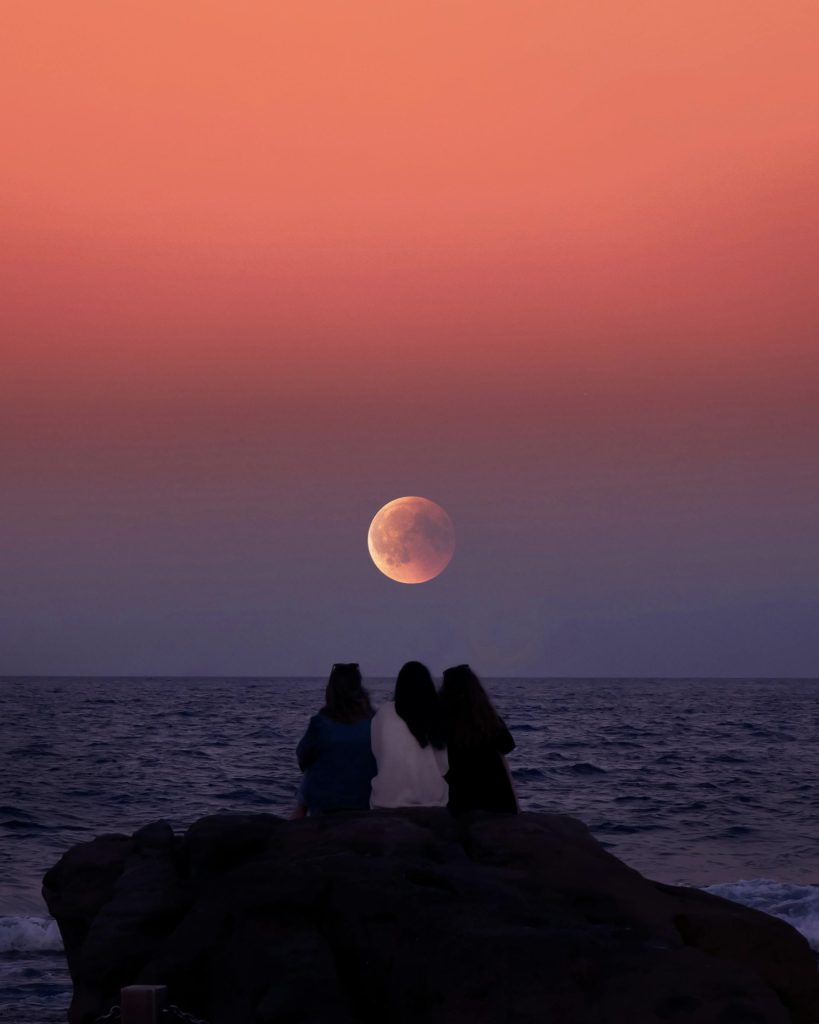
Citations:
¹ United Nations, Department of Economic and Social Affairs. World Population Ageing 2019. ST/ESA/SER.A/444. New York: United Nations, 2020.
² ScienceDaily. “Human-like Altruism Shown In Chimpanzees.” Accessed 12 May 2025. https://www.sciencedaily.com/releases/2007/11/071105134211.htm.
³ Pereira ME, Izard MK (1989). “Lactation and care for unrelated infants in forest-living ringtailed Lemurs”. American Journal of Primatology. 18 (2): 101–108.
⁴ Pitman, Robert L. “Humpback Whales Interfering When Mammal-Eating Killer Whales Attack Other Species: Mobbing Behavior and Interspecific Altruism?” Marine Mammal Science 33, no. 1 (2017): 7–58.⁵ Hammood, Yasir Mohammed, Sayed M. Ismail, KDV Prasad, Mohamad Ahmad Saleem Khasawneh, and Mahdi Naeim. “Multigenerational Resilience: A Novel Theory on the Psychological Transmission of Resilience and the Role of Culture and Spirituality in Indigenous Communities: A Narrative Review.” Asian Journal of Psychiatry 107 (2025): 104485. https://doi.org/10.1016/j.ajp.2025.104485.
